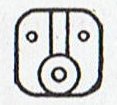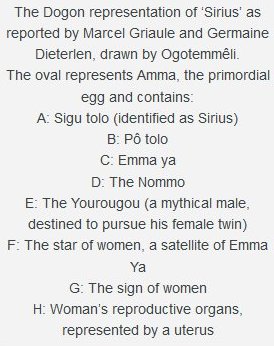Bb12.7 Once upon a time there should have been a hole of Southern Entrance at the place where Antares would have been visible close to the Full Moon, viz. at SEPTEMBER 22 (*185). And 3 days (→ 'little sisters') later the Hawaian cycle of Lono (→ Aldebaran) might have begun (at *188 = SEPTEMBER 25) - where Limbs could have begun to do their work:
... During his descent the ancestor still possessed the quality of a water spirit, and his body, though preserving its human appearance, owing to its being that of a regenerated man, was equipped with four flexible limbs like serpents after the pattern of the arms of the Great Nummo [= Nommo, the 4th Dogon station as counted from zero at the satellite of Emma Ya, cfr F respectively D below].
The ground was rapidly approaching. The ancestor was still standing, his arms in front of him and the hammer and anvil hanging across his limbs. The shock of his final impact on the earth when he came to the end of the rainbow, scattered in a cloud of dust the animals, vegetables and men disposed on the steps. When calm was restored, the smith was still on the roof, standing erect facing towards the north, his tools still in the same position. But in the shock of landing the hammer and the anvil had broken his arms and legs at the level of elbows and knees, which he did not have before. He thus acquired the joints proper to the new human form, which was to spread over the earth and to devote itself to toil ...
The Apus (No Feet) constellation was one of the Southern Birds, close to the Southern Triangle. The Northern Triangle was close to Aries and Musca Borealis = the Northern Fly, whereas the Southern Triangle was close to the Southern Fly = Musca Australis and to the Fire Altar, Ara: ... In Bayer's Uranometria from the year 1603 the Bird of Paradise is depicted among the constellations in the southern sky. The name Apus means 'without feet'. The great paradise birds of East India have exceedingly beautiful feathers but very ugly feet. When anciently the natives tried to sell these birds to the Europeans they therefore first cut off their feet ...
|
|||||||||||||||||||||||||||||||||||||||||||||||||||||||||||||||||||||||||||||||||||||||||||||||||||||||||||||













.jpg)